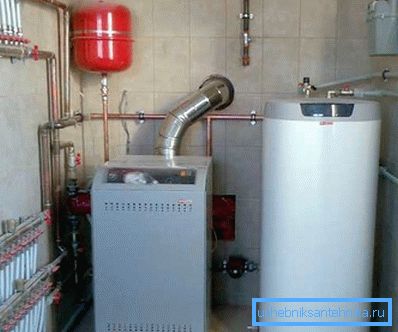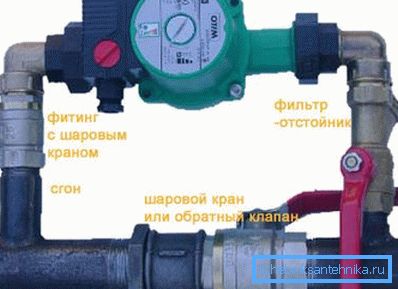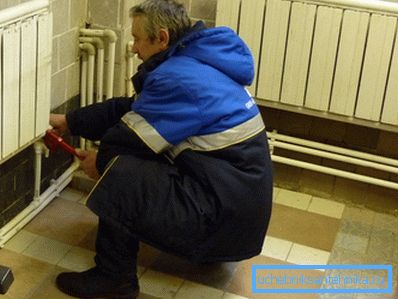Closed heating system - features and advantages of this type
Nowadays there are many schemes of heating communications, with each of the options has its own characteristics that should be considered when choosing. For example, a closed heating system with natural circulation is an excellent option for homes where there are frequent power outages, but if possible, it is better to collect closed-type heating with a circulation pump, below you will see that it is this solution that is optimal for most buildings.

The main advantages of a closed system
This option is the most popular in all European countries, this is due to a number of factors:
| Durability | Properly collected communications have a very large work resource. This is due both to the quality of the components used and to the fact that in all nodes the corrosion processes practically do not proceed, since there is no air access. The main thing is to use clean water as a coolant. |
| Simplicity | You can even assemble the system with your own hands, which allows you to save considerable funds, since the price of the work of specialists is quite high. In addition, closed heating systems are easy to maintain and do not require large expenditures to maintain a healthy state. |
| Autonomy | Unlike open type communications, a closed loop does not allow water to evaporate, so you do not have to constantly monitor the level of coolant and periodically add it. |
| Security | Expansion tank for closed type heating is a mandatory element of the system, due to which the pressure indicators vary within a small range. This minimizes the likelihood of accidents and leaks. After all, the most common cause of damage is excessive pressure. |

The main elements of a closed system of the forced type
Consider this option in more detail, as it is optimal for a private house. In order for communications to work efficiently and correctly, it is necessary to pay particular attention to certain nodes and their choice.
Expansion tank
So what is an expansion tank?
This is a special container consisting of several parts:
- The case made by a method of stamping from high-strength steel. The most reliable options are made of stainless steel - it is resistant to corrosion, and therefore minimally exposed to the negative effects of temperature changes. The capacity of the expansion tank is calculated individually for each system.
Tip! It is best to entrust all design and design work to specialists, this will save you from mistakes and costly rework caused by miscalculations.

- The membrane is made of an elastic material that bends under pressure. It can be either stationary (when it fails, the entire tank is replaced) or interchangeable (fixed by means of a flange, and in the event of damage, simply replace it).
- Either air pumped under pressure or inert gas (in more expensive models) is used as a filler. It is he who provides the required characteristics of the equipment at various pressures.
The heating scheme of a closed type must necessarily provide for the installation of an expansion tank; without it, correct and safe operation is impossible.
Boiler
It is the heat generator that maintains the required temperature in the room; when choosing it, it is important to consider the following factors:

- The power of equipment, as a rule, is used to calculate a simple rule: with a ceiling height of up to 3 meters and high-quality thermal insulation of walls at 10 m2 should account for 1 kW of power. You should not buy too powerful equipment, as the cost of heating will be much higher.
- Fuel type: today the best option is natural gas; but if the area on which the house was erected is not gasified, you will have to choose from other options: liquefied gas in a special tank (gas-holder), use of wood or peat briquette, electric heating, and a diesel heat generator. The specific solution depends on the characteristics of your region and the cost of a particular type of fuel.
Tip! It is best to purchase equipment of well-known companies, it guarantees its reliability and durability.
Each domestic boiler for the heating system must have a manual for installation and operation in Russian, this will help to understand all the features of installation and maintenance.
Circulation pump

Here the following factors are important:
- Due to the fact that the pump will work almost constantly, the highest demands are placed on it: it must operate with a minimum level of noise, consume as little energy as possible and have an impressive resource. The heating system of a closed type depends largely on this node and its proper operation.
- Equipment is located on the return line near the boiler, it is important to provide a location in the project.

Important notes
Installation of a closed heating system is carried out in compliance with all requirements for communications of this kind.
In order to avoid problems after the completion of work, remember the following:
- Filling the closed heating system with water allows you to check all connections for leaks. To remove air from the pipes, a Mayevsky crane must be present on each radiator, and special valves are installed at the upper points.
- Commissioning is carried out in the presence of a specialist supervisory organization., Especially if the installation of a closed heating system was done on its own, because without a conclusion about the compliance of communications with the requirements, it is prohibited to use them.

Conclusion
From the foregoing, we can conclude that a closed heating system with forced circulation is one of the best options to date. We recommend to watch the video, which clearly shows some of the above works.